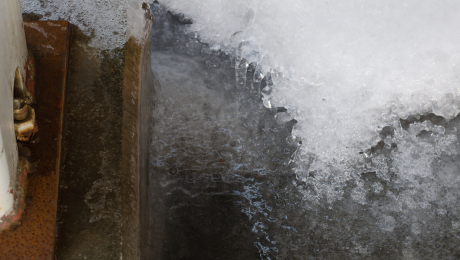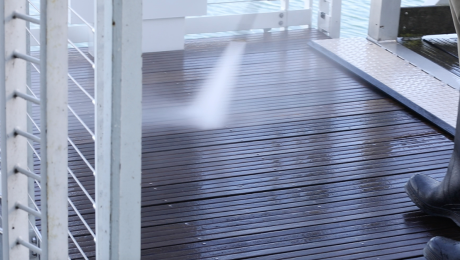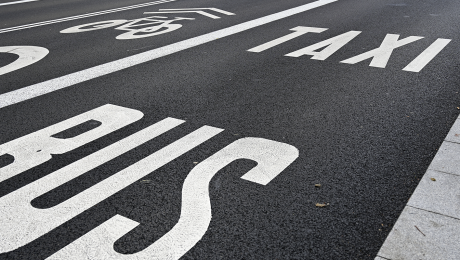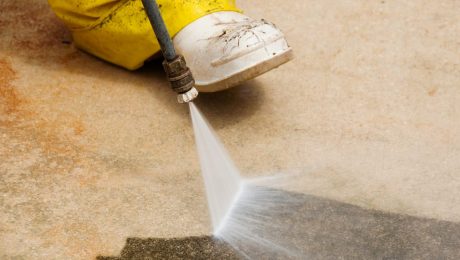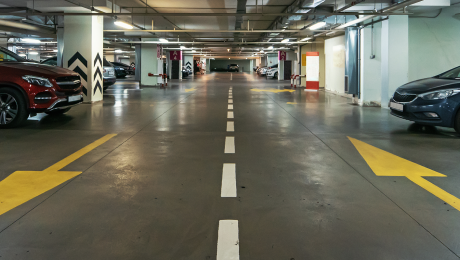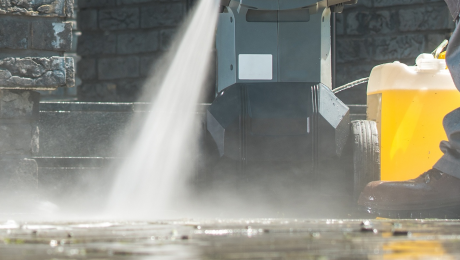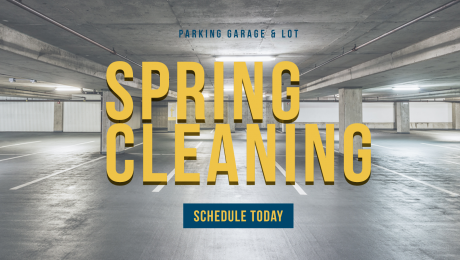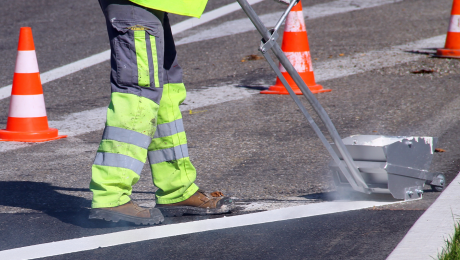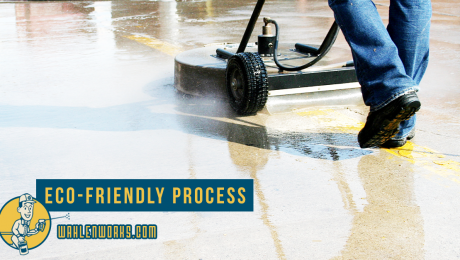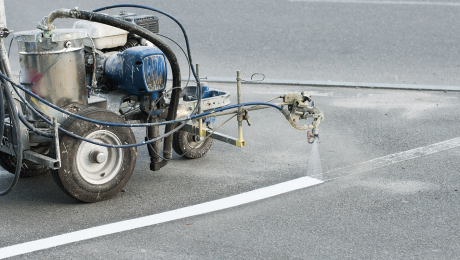Wahlen Works Blog
Parking Lot Maintenance Checklist For Winter
Winter Preparation Checklist
- Clean your parking lot. Leaves are not as innocent as they seem. Their chemical composition can damage the surface of your concrete or asphalt. In addition, fall leaves that have been compacted and frozen by an early snowfall are a pain to remove. A professional sweeping will clear leaves and debris from places where water needs to flow freely. Then, pressure wash the entire facility for clean, odorless property.
- Inspect thoroughly for damage. Perform repairs on potholes or cracks. If you defer these repairs until the spring thaw, the damage will be greater and more expensive to fix.
- Check your drainage so water doesn’t pool in the lot or run back to the foundation.
- Seal your concrete. Concrete sealing creates a barrier between winter chemicals and salt and your parking surface. By the end of October, seal coating season is just about over, so don’t delay.
- Walk around all your snow plowing routes to ensure that they are unobstructed.
- Evaluate whether or not your pavement markings and signs are clear and easy to see. If not, consider new parking lot striping. A freshly painted lot increases the odds that people will drive and park safely. When large sections of your parking lot are used to store unmelted snow, you need to make sure that the rest of your parking lot can be used properly and efficiently.
- Review all customer and employee access points into your building. wash to make sure that people don’t slip and fall. check for irregularities in the walkway that can cause people to trip.
- Published in Marking, Parking Structures, Sealing, Washing
8 Businesses That Need Professional Power Washing
- Published in Washing
What Is Your Pavement Marking Saying?
Do you realize that your pavement marking can talk? Well maybe not talk exactly, but it certainly can communicate. In fact, that is its primary function. It’s like the project manager on your team or the traffic officer at Miller Park. Fresh, high quality pavement marking keeps vehicle and pedestrian traffic organized and moving smoothly which keeps everyone safer and happier.
What Is The Purpose of Marking?
Pavement marking is so ubiquitous and so expected that most people rarely give it a thought — until it isn’t visible when they need it. If you have ever been caught in a blinding thunderstorm or found yourself with seconds to decide if you need to merge or stay put, you know that proper road surface marking is the difference between fear and confidence.
The Manual on Uniform Traffic Control Devices (MUTCD) published by the U.S. Department of Transportation says, “Pavement markings are used to convey messages to roadway users. They indicate which part of the road to use, provide information about conditions ahead, and indicate where passing is allowed.” Symbols, such as for bicycles, tell you how you are permitted to use the lanes. They can also warn you of areas where you might want to exercise caution, such as at railroad crossings.
In parking structures and on other private property, clear easy-to-understand striping tells drivers where to go and what to do. A prominent crosswalk tells pedestrians that it is safe to walk there. Signs and symbols tell both foot and vehicle traffic where they are permitted to move, wait, and park. This is good for customers and business, but it also complies with the law, specifically in regard to the Americans with Disabilities Act (ADA). When creating handicapped parking areas, a combination of clearly marked stalls and proper signage sends a warm welcome message to all visitors.
What Do Parking Lot Pavement Markings Mean?
When you enter a ramp or other parking structure, you are confronted with markings that are more complex than the standard yellow and white of the highways. Pavement marking works in conjunction with signs and (sometimes) traffic signals to direct traffic through a parking area and a yellow line (either solid or broken) is still used to indicate two-way traffic. However, you will also see stop lines, crosswalks, painted curbs, and symbol markings.
- A stop bar marking is a single white line that tells you where to stop.
- Word and symbol markings, such as yield or directional arrows, communicate to you without diverting your attention from the road.
- Crosswalk markings are parallel double white lines that tell pedestrians where they can cross the roadway. Sometimes they are accompanied by the symbol “ped xing” on the road just before the crosswalk that tells the driver to prepare to stop.
- Curb striping is used to communicate curb use rules such as no parking, fire lanes, handicapped zones, loading and unloading, parking for a short period of time, and parking allowed.
$136M Pavement Marking Project
In California, they tested a new 6-inch wide, highly reflective road striping in 2017. The $136 million project was implemented on I-80 in the capital city of Sacramento. The test was so successful that Caltrans decided to re-stripe 50,000-plus lane miles of state highway system in the next decade.
Their reasoning is that markings “must be capable of conveying information during inclement weather and evening hours when there may be little to no illumination from overhead lighting. The 6-in.-wide striping provides a valuable continuous stream of information about the roadway that signs or signals cannot supply. They alert drivers to changes in the roadway and help them maintain their position inside of the lane without requiring the driver to take their eyes off the road.”
While pavement marking obviously can’t talk, it does tell us things and communicates valuable information that we literally cannot live without. If your striping is faded or inefficient, give us a call. We’ll have it “talking” to you again in no time.
- Published in Marking
DIY Pressure Washing: Please Don’t
The Three Most Important Reasons To Seal Your Concrete
Concrete Has Made the Modern World
The importance of concrete can’t be overstated. It is the most widely used man-made material on the planet.
A recent blog post by Bill Gates is titled, “Have You Hugged a Concrete Pillar Today?” He quotes Vaclav Smill who “argues that the most important man-made material is concrete, both in terms of the amount we produce each year and the total mass we’ve laid down. It is the foundation (literally) for the massive expansion of urban areas of the past several decades, which has been a big factor in cutting the rate of extreme poverty in half since 1990.”
What is Concrete?
According to the University of Illinois Department of Materials Science and Engineering, concrete is a composite material which is made up of a filler and a binder. The binder (cement paste) “glues” the filler together to form a synthetic conglomerate. The constituents used for the binder are cement and water, while the filler can be fine or coarse aggregate… It is important to distinguish between cement and concrete as they are not the same.”
Cement is not used on its own. When it’s mixed with fine filler you get mortar for masonry. When it’s mixed with coarse sand and gravel you get concrete. Another key piece of the equation is water. The amount of water you use determines the strength of the aggregate. “Low water to cement ratio leads to high strength but low workability. High water to cement ratio leads to low strength, but good workability.” It can be further strengthened by adding rebar – reinforcing steel bars.
Strengths and Weaknesses
Concrete is strong enough to bear the heavy load of a skyscraper without compressing. It can resist the pressure of water behind a dam. It can support thousands of cars, trucks, and busses on a bridge. There is a reason that concrete structures from the Roman Empire still exist.
Concrete can also deteriorate. In places like Wisconsin, where the temperatures drop below freezing every year, water from snow and rain can penetrate its surface. The water expands about 9% in volume as it freezes. When it melts during warmer weather it causes the material to weaken over time. Concrete also deteriorates when exposed to certain chemicals such as acids which are present in spills, or salts and alkalis which are used to treat driving surfaces in winter.
At Wahlen Works, we know concrete. We understand it’s properties and we know how to preserve it. The surface needs regular washing to remove acids, salts, and alkalis. It needs to be sealed once every five years or so. We are ready to bring our expertise to your unique property challenges and save you money over the long-term.
Concrete Trivia
- The first concrete street in America was built in Bellefontaine, Ohio in 1891.
- The heaviest concrete structure in the world today is the Three Gorges Dam in China, which opened in 2003. It weighs 144,309,356,753.51 pounds.
- In 1819, the first known parking garage was built for the Hotel La Salle in Chicago.
- The Pantheon in Rome has the world’s largest unreinforced concrete dome.
- In the modern world, only water is used more than concrete.
- Published in Latest, Uncategorized
Spring Cleaning for Parking Structures and Garages
Spring has officially arrived! One of the first things we recommend you do is go outside and take a look at your parking structures and garages. Are they gray and dusty? Is there an unpleasant accumulation of sand and salt? Have the markings on the pavement faded? Has trash been blown into the corners? If so it’s time for spring cleaning. If the debris and chemicals and sand aren’t disposed of properly, you risk damaged concrete and clogged drains.
Your concrete needs regular cleaning and preventative maintenance to prolong the life of the surface and save money on expensive repairs. But it especially needs a deep clean after one of our long midwestern winters. Located in the middle of the “Winter Facts” page on the Wisconsin DOT website is a list of some the materials they use to treat roads for snow and ice: calcium chloride, magnesium chloride, salt brine. Property owners should remove and dispose of pollutants properly for structural preservation. This maintenance also maintains an aesthetically pleasing appearance and prevents environmental damage. Engaging in prompt clean-up will also reduce the risk of injury to pedestrians who might slip on accumulated dry sand.
Spring Cleaning List
The spring cleaning list for parking structures and garages includes:
- A thorough sweeping to remove trash, sand, salt, and any leftover leaves from last fall.
- Pre-treating stains from oil spills, beverage spills, and other dirt deposits.
- Professional power washing with a high pressure nozzle to deep clean the paved surface and lift out all of the dirt.
- Re-marking of faded parking stall lines, pedestrian walkways, and directional arrows.
- Concrete sealing to protect your surfaces from water, chemicals, and traffic wear-and-tear.
Once each of the items above is checked off, it’s time to think about ongoing maintenance. Some facilities, such as hospitals, have a high volume of traffic and high turnover in the parking areas. Dirt and debris accumulate much faster than in a structure, such as an apartment, that doesn’t see as many vehicles entering and exiting. A high volume facility may require monthly sweeping while a low volume facility may only need two to three maintenance sweeps a year.
Spring Cleaning Service Package
Spring is a great time to consider a complete service package for your property. Service packages include sweeping, power washing, pavement striping, concrete sealing, and ongoing maintenance. This type of package offers the greatest value to the business owner. At Wahlen Works the cost is significantly less than if the services were purchased separately. We can create contracts for time periods between one to five years so that you can plan and budget accordingly. Longer term contracts lock in current pricing and save the headache of having to address the same issue year after year.
Don’t hire a novice. Our knowledge of equipment, processes, and chemicals will ensure that your parking facility maintains a clean, professional appearance at all times. We provide our services on your schedule so that your business isn’t disrupted and we guarantee outstanding results. Contact us today to schedule an appointment that fits with your schedule. https://www.wahlenworks.com/estimate/
- Published in Latest, Uncategorized, Washing
With Fresh Pavement Striping, The “New” Look is Easier Than You Thought
If you’re a Milwaukee commercial property owner, a parking lot with freshly painted, clearly marked lines is almost as good as the smell of a brand new automobile. But that freshly painted look is hard to remember after a long winter of snow and snowplows, when your pavement striping is as faded as a ten-year old car. In addition to the pleasure of a new-looking lot, your customers’ convenience and safety depend on the clarity and visibility that a professionally striped parking lot provides.
So how do you get that “new car feel” for your old parking lot?
First, you want to ask yourself a few questions. “Does the traffic flow make sense to my visitors?” “Is the space used as efficiently as it could be? Am I compliant with all applicable regulations?” “Do I have enough upright signage for stopping, yielding, and pedestrian crossing?” “Can pedestrian walkways be clearly seen?” If the answer to any of the above questions is no, it’s time to restore your parking lot pavement to it’s original showroom look.
Fresh pavement striping will provide you with clearly marked parking stalls and bright, durable marking. This means professional quality, crisp lines measured precisely and painted to the required thickness. It includes pedestrian walking spaces, directional driving arrows, entrance and exit signs, handicapped parking spaces, loading and unloading areas, and unmistakable fire lane areas. In some instances, such as handicapped spaces and fire lanes, there must also be both marking on the pavement and on upright signs.
Whether it is brand new asphalt, freshly seal coated concrete, or existing lines that need to be re-painted, we do it all. We have the equipment and personnel to complete the work in your off hours so we do not interrupt your operations. Restoring your Milwaukee parking lot to it’s original shine has never been easier.
For a complete parking lot remodel, ask about including our power washing and concrete sealing services along with your pavement striping job. You’ll be proud of your property once again.
- Published in Latest, Marking, Uncategorized
When Pressure Washing, Superior Process = Superior Results
According to Greg Neiderer, Principal and Director of Restoration for Walker Consultants, a leading parking consultant in the United States, “Some parking facility owners and operators believe that as long as their structures continue to serve the public, few maintenance-related tasks need to be performed. Nothing could be further from the truth.” In a case study of three Pennsylvania garages, Neiderer shows that the one with the most comprehensive maintenance history had the lowest cost per space per year.
Proper parking structure maintenance reduces premature deterioration and future operating costs. An important part of this ongoing maintenance is the cleaning and washing of concrete surfaces. Concrete is a porous surface that can absorb oil and other liquids like a sponge. Chloride contamination caused by deicing salt contributes to deterioration of the concrete as well. These substances need to be removed regularly. Professional pressure washing produces a deep, uniform clean that is both cost-effective and aesthetically pleasing.
At Wahlen Works we specialize in full-service commercial pressure washing for businesses that have high standards of property maintenance and cleanliness. We accomplish this with a thorough, detailed four-step cleaning process that consistently provides superior pressure washing results.
- First, we thoroughly go over the entire facility with pre-treating chemicals which are all biodegradable. We treat oil spots, beverage stains, and other dirt deposits.
- Second, we apply phosphate free, professional grade detergents to the entire surface of the garage.
- Third, we detail every square inch with a high pressure nozzle, providing a deep clean to lift out all of the dirt. In contrast to the surface cleaning used by some other companies, this is a close application to blast all the dirt out.
- Fourth, we drain the waste water. We use polypropylene filters over the drains which pull oil from the water and prevent debris from washing into the sewage system. At the end, we pick up everything and dispose of it properly. If your property requires waste water recovery, we provide that service at this time.
When you hire Wahlen Works, you are investing in the longevity and appearance of your property. In addition to reducing overall operating costs, your facility will look better and make a better impression on visitors. Contact us today to get a quote on pressure washing services for your parking structure.
How to Take Care of Your Parking Lot or Garage Year Round
Caring for your parking lot or garage is a huge component of building maintenance. As mentioned in a previous post, it influences the first impression your customer has when they arrive at your facility. At Wahlen, we have over 40 years of experience keeping parking lots and garages in tip top shape and recommend the following schedule.
As often as needed:
The first step to keeping a lot or garage clean is to ensure the pavement is kept free of debris. Whether you manage a lot or garage, we recommend you have your pavement swept as often as you feel the need to. If you manage a lot, we definitely recommend doing a sweep after the leaves have fallen in the fall, before the first snowfall, and after winter once the snow has melted. While we love the changing colors of fall, once fallen leaves begin to deteriorate they can make your lot appear dirty. Similarly, a sweep and clean before winter can help ensure fallen snow doesn’t get dirty from what’s beneath it. Once the final snow melts, hidden debris may be revealed, so it’s another great time to call Wahlen and get your lot ready for summer.
Twice a year:
We recommend pressure washing twice a year for more than just aesthetic reasons. A proper pressure washing will help preserve the concrete surface by removing contaminants such as oil, beverage spills, and most import, salt. If left to sit on a concrete surface, salt can penetrate the concrete, resulting in pitted surfaces and rusted rebar. When the steel rebar begins to corrode, the structural integrity of the concrete becomes compromised , resulting in cracked, uneven surfaces, and weakened concrete. Pressure washing on a regular basis can delay this process for years, preserving the investment that you’ve made in the concrete surface.
Every other year:
In addition to keeping your lot or garage clean, it’s your responsibility to keep it safe for the drivers who will be parking in it. Ensuring you have clear and vibrant striping helps prevent confusion and keep drivers as well as pedestrians safe. Clear identification of handicapped parking stalls are also necessary requirements of the American with Disabilities Act. Not only does proper striping keep folks safe, it adds to the overall appearance of your building.
Every three years:
In addition to cleaning and striping, a well-maintained concrete lot or parking garage is sealed every 3-5 years. Concrete sealing is another measure of protection to help ensure your investment lasts as long as possible. Keeping up with your parking lot or garage maintenance schedule can be a lot of work, but that’s where Wahlen comes in. Wahlen Works offers sweeping, pressure washing, striping, and sealing services and we take on coordinating these efforts so you don’t have to. Contact us today to learn what we can do for you.
- Published in Latest, Uncategorized

